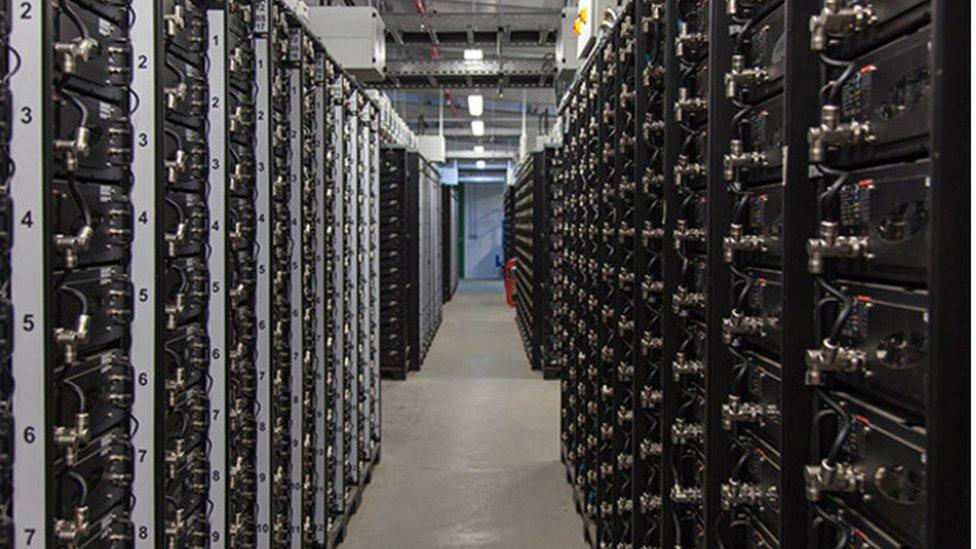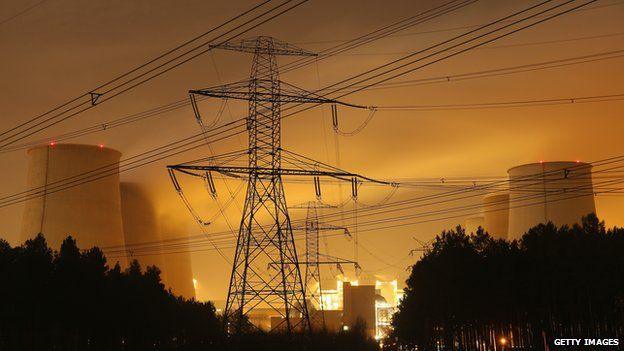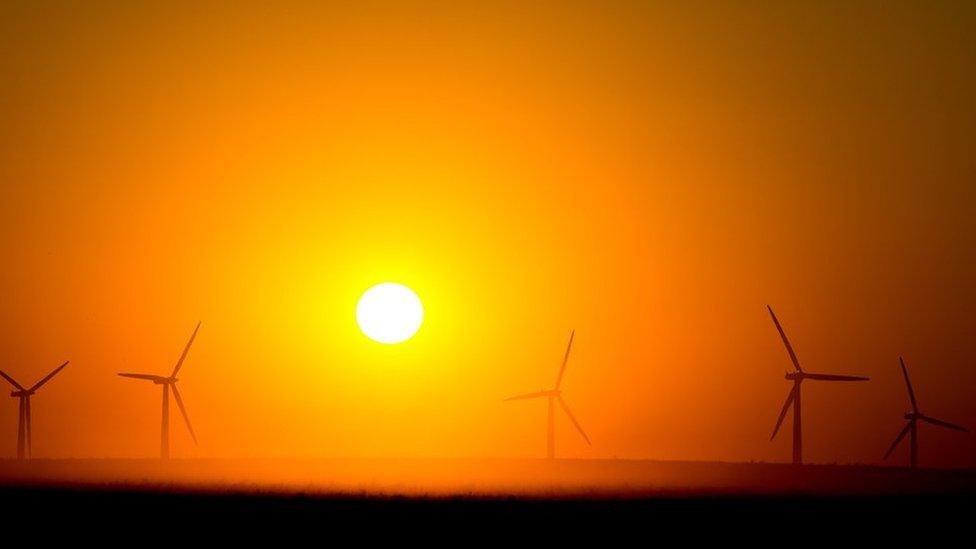Batteries charged to play bigger role in UK energy grid
- Published

Batteries offer a greener way of storing electricity
It's battery farming, but not as we know it.
In a big step forward for green energy, the government has said that low-carbon batteries will play a role in balancing the national grid for the first time.
About 500MW of battery storage will come online by 2020-21, it said, helping to assure electricity supply at times of high demand.
It follows a market-wide capacity auction that also saw agreements signed with gas and coal-power providers.
Gareth Miller of energy research group Cornwall said the success of batteries in this year's auction was a "significant step".
"It may represent only a fraction of total capacity but I think the role of batteries is only going to grow. And lithium ion batteries are a much cleaner way of storing electricity.
"That said, the government must overcome a number of policy obstacles if it wants to speed this growth," he added.

Demand for central power generation and distribution will fall with the take up of energy storage, experts say
Centrica is among the energy providers who have signed deals to provide battery storage capacity in 2020-21.
The firm has pledged to open a 49MW battery plant at Roosecote, Cumbria, which will be capable of holding enough power to meet the needs of around 50,000 homes. It says the plant will respond to fluctuations in electricity demand in under a second.
"Falling battery costs and the increasing need for flexibility to support intermittent renewables has brought battery storage into commercial reality," said Jorge Pikunic, managing director of Centrica's distributed energy and power business.
"Grid scale battery storage can play an important role in helping to manage second by second fluctuations in demand, helping to keep the grid stable," he added.

Analysis: John Moylan, BBC industry correspondent
The government has hailed this week's auction saying that new build gas plants and battery storage will ensure Britain's electricity demands are met in four years time.
In truth, only two mid-sized new gas plants are likely to be built. These appear to be extensions or refurbishments of existing facilities.
Most of the £1.2bn cost of the auction (which we'll pay via our energy bills) will go to existing generators - including EDF with its nuclear fleet which would have been operating anyway.
And analysts say that some plants that failed to secure subsidies could now be at risk of closure.
The arrival of battery technology to keep the lights on is an indication of how far that technology has come.
But whether that all amounts to a coherent energy landscape fit for the 2020s is far from clear.

Below expectations
The government began its annual capacity auctions in 2014, looking to head off future power shortages as coal plants close and as low electricity prices dissuade investors from building new capacity.
In short, plant owners are paid to make available back-up power at short notice.
Over 52GW of electricity for 2020-21 was secured in this year's auction - which concluded on Thursday - including agreements for gas and coal power projects.
E.ON, Scottish Power and Uniper were among 166 applicants provisionally awarded capacity agreements.
However, prices came in well below expectations, casting doubt on how much extra capacity providers will commit to building to ensure the country avoids winter supply shortages.
Prices cleared at £22.50 per kilowatt/year, while analysts have said a price of £35-45 is needed to spur new gas plant investment.
However, Business and Energy Secretary Greg Clark said: "Our homes and businesses need an electricity supply they can rely on all year round. We've provided them with that certainty, at a low cost to bill payers, years in advance."
- Published4 December 2015
